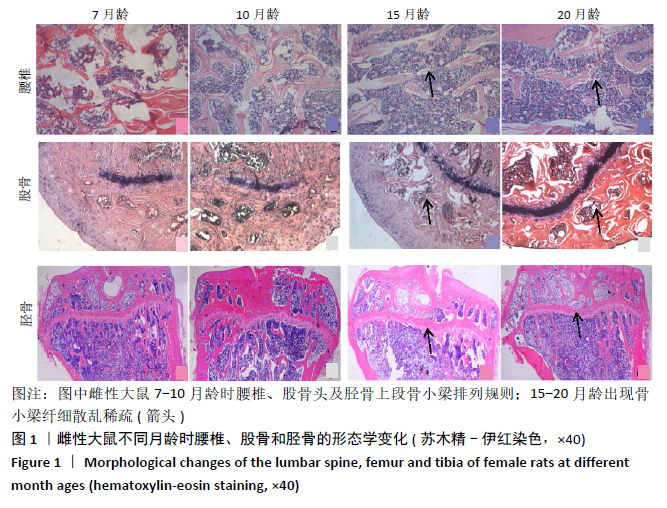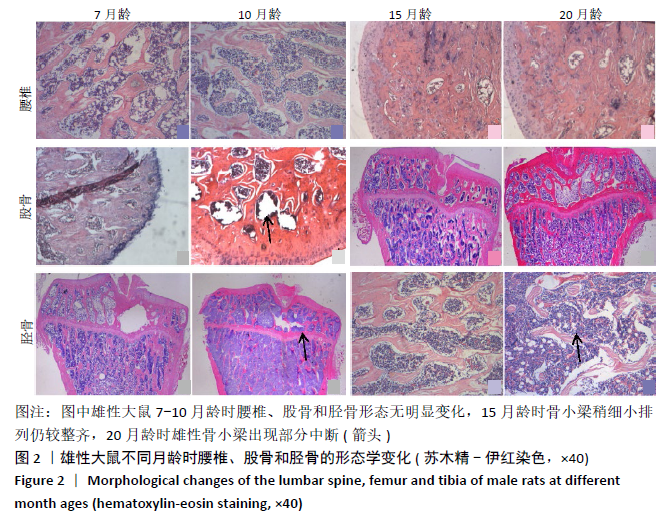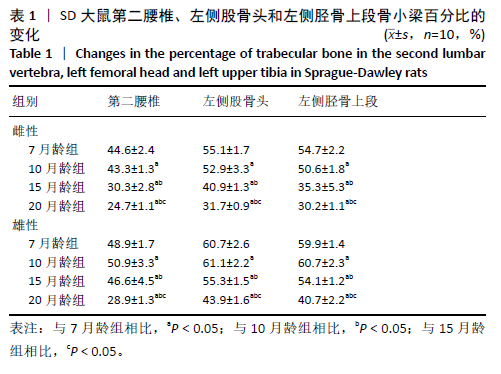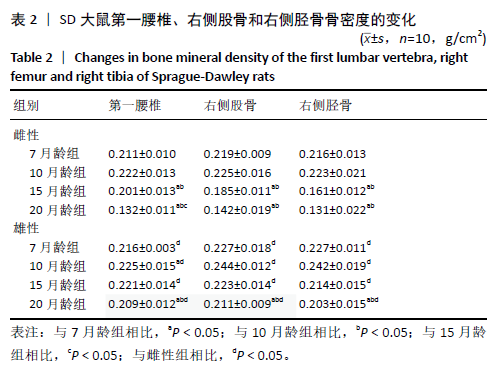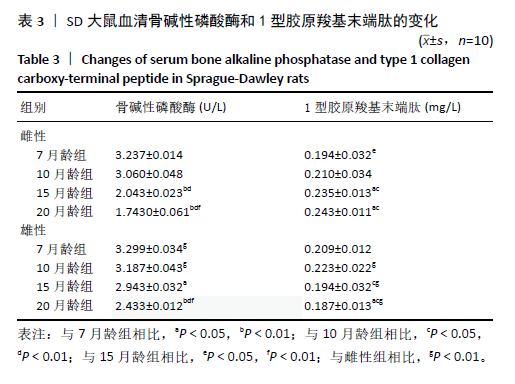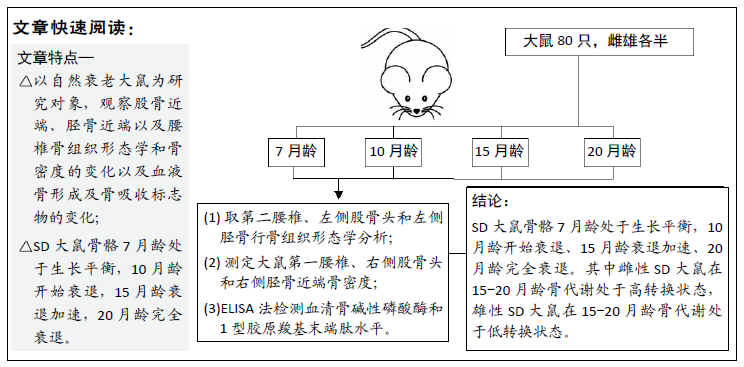中国组织工程研究 ›› 2021, Vol. 25 ›› Issue (26): 4118-4122.doi: 10.12307/2021.108
• 骨组织构建 bone tissue construction • 上一篇 下一篇
自然衰老大鼠不同部位骨组织形态、骨密度及骨代谢指标的变化
游 斌,黄秀珠,林 煜,黄 浠
- 厦门大学附属福州第二医院,福建省福州市 350007
Changes in bone morphology, bone mineral density and bone metabolism in different parts of natural aging rats
You Bin, Huang Xiuzhu, Lin Yu, Huang Xi
- Fuzhou Second Hospital Affiliated to Xiamen University, Fuzhou 350007, Fujian Province, China
摘要:
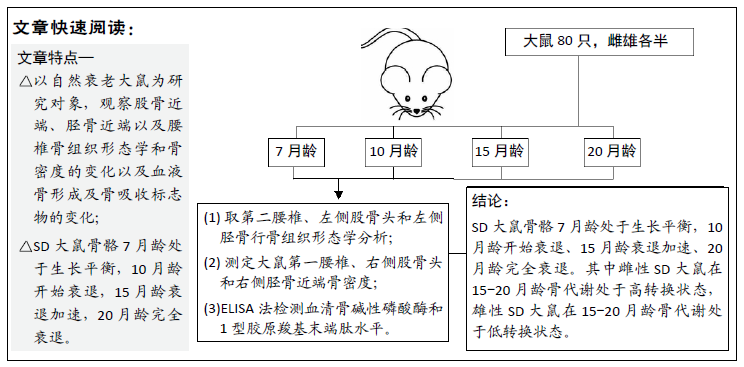
文题释义:
自然衰老:又称为内源性衰老或固有性衰老,是由于生物体内在因素引起的身体内各组织器官的衰老。
骨代谢:骨的功能是为肌肉收缩提供附着处及保护内脏等重要的生命器官。一般认为骨在细胞水平上是不活跃的,事实上骨细胞在不停地进行着细胞代谢,不仅骨细胞之间会相互作用,还存在骨髓中的红细胞生成细胞和基质细胞相互作用,以进行骨的改建和重建。
背景:大鼠是四足啮齿动物,其骨骼负重方面与直立行走的人类并不相同,且大鼠最大寿限内出现骨稳态破坏的时程变化与人也是不一致的。
目的:分析不同大鼠自然衰老过程中骨代谢的变化。
方法:将SD大鼠分为雌性组与雄性组,各40只。其中雌性组随机分为雌性7,10,15,20月龄组,各10只;雄性组随机分为雄性7,10,15,20月龄组,各10只。实验于2016年6月经厦门大学附属福州第二医院动物实验伦理委员会批准,批准号20160012。
结果与结论:①雌性及雄性SD大鼠在7-10月龄时腰椎、股骨头及胫骨上段骨小梁排列规则,形成均匀致密网状;雌性SD大鼠在15-20月龄骨小梁纤细,间距增宽,排列散乱稀疏,可见多处中断;雄性SD大鼠在15月龄骨小梁稍细小,间距增宽,排列仍较整齐,20月龄骨小梁出现部分中断。②雌性及雄性SD大鼠各部位骨小梁面积百分比在10月龄起随月龄增加而下降,在20月龄达到最低值。骨密度结果也呈现相同趋势。③雌性及雄性SD大鼠骨碱性磷酸酶水平随着月龄增加逐渐降低。雌性SD大鼠1型胶原羧基末端肽水平随着月龄增加逐渐升高,雄性SD大鼠1型胶原羧基末端肽水平自10月龄起随着月龄增加逐渐降低。④提示SD大鼠骨骼7月龄处于生长平衡,10月龄开始衰退,15月龄衰退加速,20月龄完全衰退;其中雌性SD大鼠在15-20月龄骨代谢处于高转换状态,雄性SD大鼠在15-20月龄骨代谢处于低转换状态。
https://orcid.org/0000-0003-4405-0942 (游斌)
中国组织工程研究杂志出版内容重点:组织构建;骨细胞;软骨细胞;细胞培养;成纤维细胞;血管内皮细胞;骨质疏松;组织工程
中图分类号:
